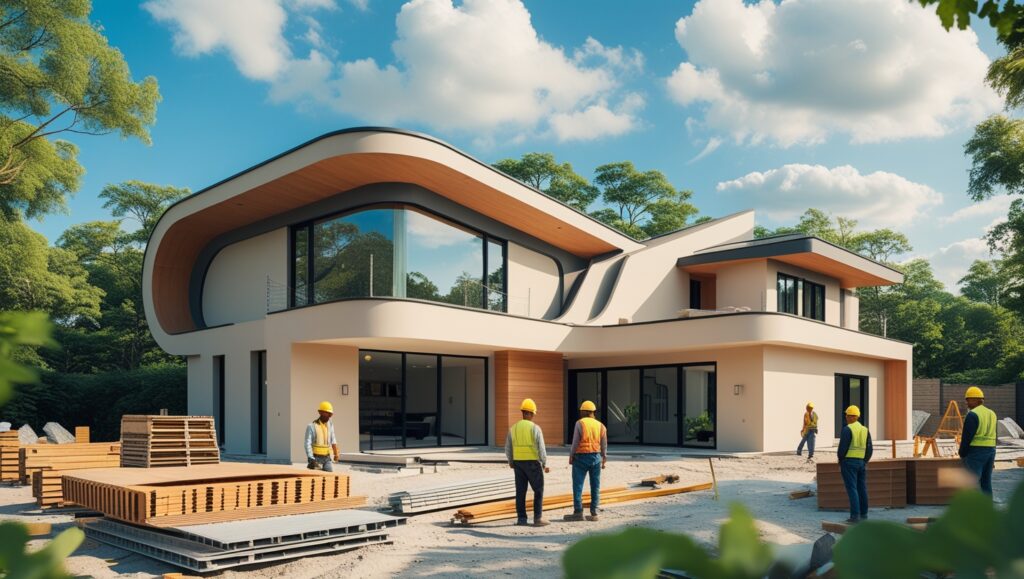Building a house in Nepal is a significant investment, and costs can spiral quickly without proper planning. From fluctuating material prices to labor challenges, every step demands careful attention. However, with smart strategies rooted in practicality, you can save money without compromising quality. Here’s how to navigate the process efficiently.
1. Hire a Client-Side Engineer for Accountability
One of the most effective ways to control costs is to hire a personal engineer or consultant who represents your interests, not the contractor’s. Their role is to:
- Verify that construction aligns with approved designs and standards.
- Check material quantities (e.g., cement, steel, bricks) against estimates to prevent overcharging.
- Monitor work quality to avoid costly rework.
Real-Life Scenario: A homeowner in Kathmandu saved 15% on their project after their engineer discovered the contractor had overestimated steel requirements by 20%. The engineer’s oversight ensured the client only paid for what was actually used.
2. Implement the Three-Party System for Transparency
In Nepal’s construction industry, the traditional approach often pits clients directly against contractors, leading to disputes and mismanagement. Instead, adopt a three-party system:
- Client: Defines requirements and budget.
- Contractor: Executes the work.
- Engineer/Consultant: Acts as a neutral mediator, ensuring compliance with timelines, budgets, and quality.
This system fosters accountability. For example, if a contractor tries to use subpar materials, the engineer can flag it immediately, saving you from future repair costs.
3. Demand Itemized Quotations & Negotiate Wisely
Always ask contractors for itemwise quotations that break down costs (e.g., per cubic meter of concrete, per square foot of flooring). This lets you:
- Compare rates across contractors.
- Verify quantities and spot inflated estimates.
- Negotiate fair prices (e.g., bargaining a 10% reduction on labor costs).
But Beware: The cheapest bid isn’t always the best. A contractor quoting unusually low rates might cut corners—like using low-grade cement or skipping reinforcement. Balance cost with reputation and past work quality.
Pro Tip: Use the engineer’s expertise to validate quotations. They can identify unrealistic pricing or missing items that could lead to hidden costs later.
4. Build Incrementally & Generate Rental Income
If funds are tight, consider phased construction. For instance:
- Build the ground and first floors first.
- Rent out the spaces to create a monthly cash flow.
- Use the rental income to fund the remaining floors.
Real-Life Example: A family in Pokhara built two floors, rented them to a retail shop and tenants, and used the ₹50,000 monthly income to finance the upper floors over two years. This approach reduced their reliance on loans and interest burdens.
Key Consideration: Design the initial phases to be rent-ready—focus on completing bathrooms, kitchens, and utilities to attract tenants faster.
5. Additional Cost-Saving Tips
- Use Local Materials: Nepali bricks, timber, and stone are often cheaper than imported alternatives.
- Buy Materials in Bulk: Collaborate with neighbors or friends to purchase cement, steel, etc., at wholesale rates.
- Monitor Progress Weekly: Regular site visits (or your engineer’s visits) prevent delays and ensure resources aren’t wasted.
Final Thoughts
Building a house in Nepal doesn’t have to drain your savings. By hiring an independent engineer, enforcing a three-party system, negotiating itemized costs, and using rental income strategically, you can maintain control over your budget. Remember: Saving money isn’t about cutting corners—it’s about making informed, proactive decisions at every stage.
Plan wisely, build smartly, and your dream home will be both affordable and enduring. Also contact As Design For House Construction.


